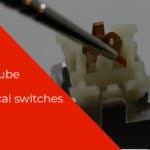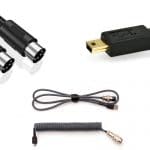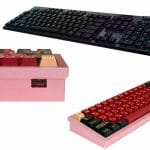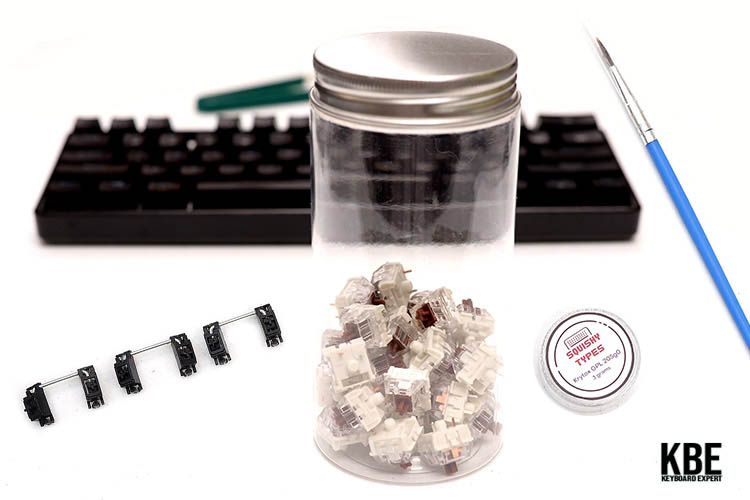
When you hear the phrase “custom mechanical keyboard,” one word that may come into mind is modification or mods. The process of doing a little work on your board would give that little extra touch to consider it custom. One such modification that is almost ubiquitous with custom mechanical keyboards is lubing and filming switches. Pretty much every build video or post listing their build specifications will include “lubed and filmed with…” alongside their listed switch.
It is almost an unspoken rule to lube your mechanical keyboard switches to provide your keyboard with a much better sound, feel, and typing experience. Although it all comes down to preference, your choices for this process will greatly affect the outcome.
This article aims to provide insight into why such a modification seems to be essential in a build. This article might help you finalize that decision for beginner builders who have yet to consider lubing their switches.
When Did Mechanical Keyboard Switch Lubing Start?
One of the earliest modern resources regarding lubing mechanical keyboard switches is a Reddit thread dated 17th of July, 2014. In the said thread is a gallery that includes many lubricants and cleaners used in different applications like dielectric grease.
There are also a few mentions of the now extremely popular switch lubricant brand, Krytox. This old Reddit thread shows how much the hobby has changed from 2014.
TaehaTypes, a keyboard content creator almost synonymous with custom builds, started uploading typing tests of his modded boards, making sure to add “lubed” + switch names in the titles. While he did not create lubing methods and applications, he most certainly contributed to the popularity of the mod. His and other keyboard content creators’ videos and streams have been integral for the mod’s popularity, with “lubed (and filmed) switches” being ever-present in the build conversations.
What are the Different Kinds of Mechanical Keyboard Switch Lube?
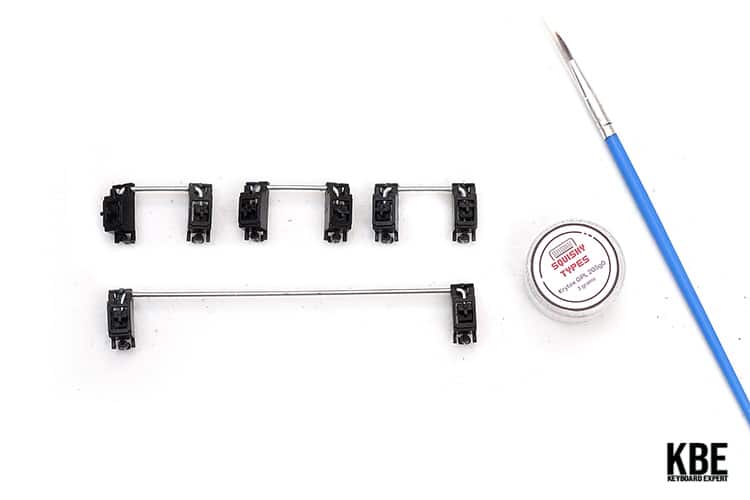
Mechanical keyboard switch lubricants are almost always sold as a compound or mix. The most popular compound being Krytox 205g0. Before going into detail on other lubricants, we would first like to discuss the main components in the lubricant mix – grease and oil.
Grease vs. Oil
Oil is a thick, viscous, hydrophobic, and typically translucent fluid that is known across many different forms such as cooking oil, crude oil, motor oil, etc. For this article, we will focus on lubricant oil typically used in machinery and fine parts (such as keyboard switches).
Grease is usually an oil with thickener added, and they can somewhat form a solid-state in low temperatures. Being thicker compounds, greases may be harder to apply on surfaces than oils. Though thinner solutions also have their difficulties.
Popular Lubricants
Tribosys 3203/3204
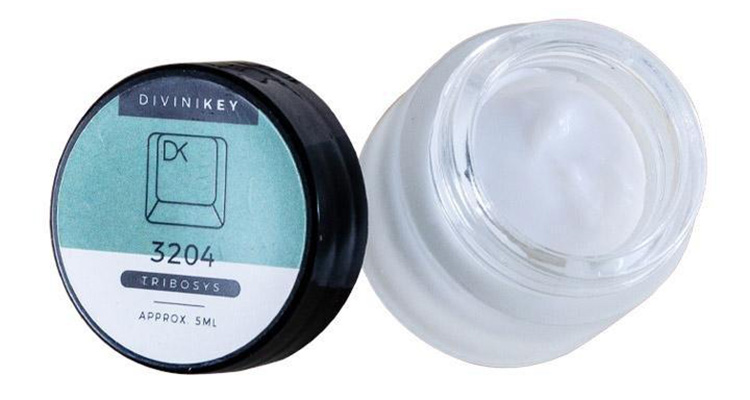
Tribosys 3203 is a semifluid grease described as a medium-thin mixture. The typical application of this lubricant is in tactile switches where much less lubricant is needed overall. Tribosys 3204 is a much thicker version of the 3203 lubricant. It is described as a medium-thick mixture. This lubricant is much more recommended for linear switches.
Krytox 10X
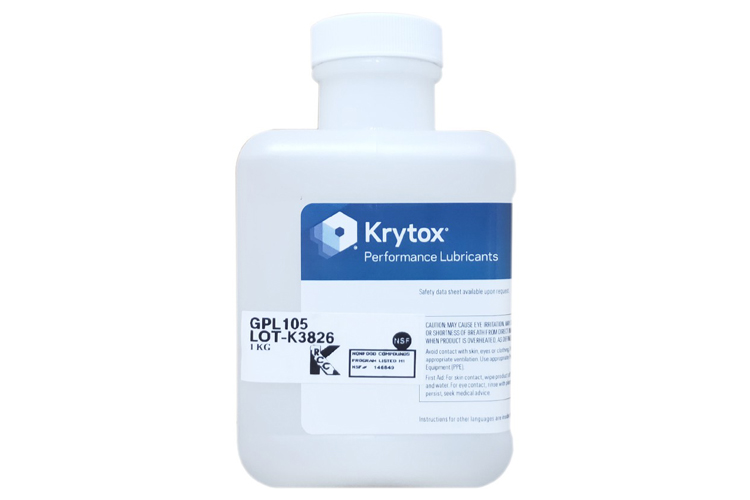
The 10X series of Krytox lubricants, also known as GPL, is the Krytox brand’s oil series of lubricants. Oil lubricants such as Krytox GPL 105 are typically used in lubricating switch springs.
Krytox 20X
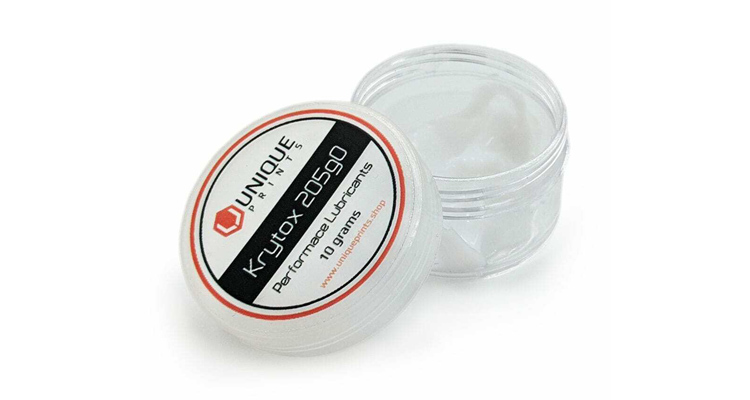
The 20X series of Krytox lubricants is the grease counterpart of lubricants. The most popular grease lubricant from this series is Krytox 205g0. Krytox 205g0 is not sold as-is but rather a thinned-out version of their 205g2 lubricant (significantly thicker than 205g0). This lubricant is considered an all-rounder, performing well across the different switch types and even other components like stabilizers.
Dielectric Grease
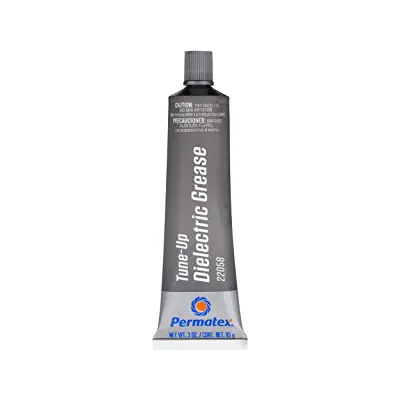
Dielectric grease is a very thick lubricant that may be used but not recommended for switches. This is because it is too thick, which can cause the switches to be too mushy and gummy, making the overall experience worse.
What are the Benefits of Mechanical Keyboard Switch Lubing?
The main reason switches are lubricated is a much better sound and feel profile—some switches, when stock, experience a less smooth travel known as scratchiness. Examples of switches notorious for having scratchiness are Cherry MX switches, specifically Reds and Browns.
Another sound lubing improves is spring ping. If you’ve ever listened to a spring ballpoint pen slowly click, you will most likely have heard a tight, squeaking noise – that is spring ping. By properly lubricating springs, you will eliminate this noise by a great deal.
Silent switches benefit greatly from this process. Because the switch stem is silent, the spring noise will be much more noticeable than normal switches.
Since lubing affects the contact points in a switch to provide better travel and sound, as previously mentioned, the overall typing experience is much more pleasing. At times, a scratchy switch will feel like fine sandpaper contacting a smooth surface – not exactly a pleasant typing experience. Meanwhile, a smoother switch will have a form of consistency across the actuation.
Just be sure you don’t over-lube keyboard switches! Read more to find out how to tell you’ve overdone it.
How To Lube Mechanical Keyboard Switches Switches
First and foremost, you will need a few tools for lubing – switch opener/flathead screwdriver, tweezers, brush to apply the lube, your lube of choice (and switch films if filming as well), and other tools that may assist you in the process (i.e., Lubing station, stem holder, containers).
Lubing mechanical keyboard switches is a very simple process. It can be divided into 5 steps (including one optional step): Disassembly, Sorting, Component Lubing, Filming, and Reassembly.
Disassembly
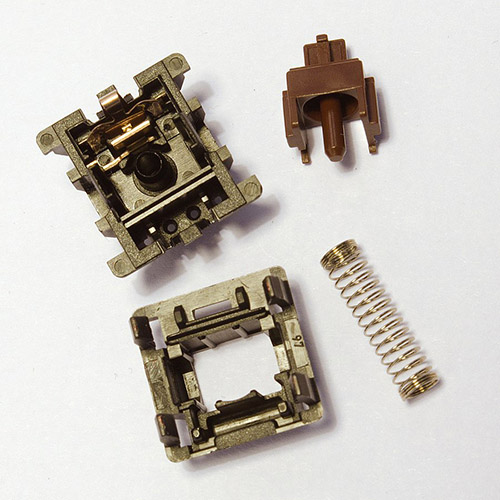
You may do this with a switch opener or a small flathead screwdriver. The former is more recommended as improper opening with a screwdriver may damage or possibly even destroy the switch components.
Sorting
After disassembling the switch, you will want to separate the components individually, making the workflow much easier.
Lubing the Components
We will not go into detail with this step as a more in-depth article about this step will be written. To summarize, using the brush, apply lube to the bottom housing where it makes contact with the stem; evenly lubricate the spring; then apply lube to the stem according to your switch type. You will want to avoid applying lube to the legs on a tactile switch as it may affect the tactility of the switch.
For clicky switches, it is advised only to lubricate the springs as the clickiness might be affected by lubing the other components.
Filming
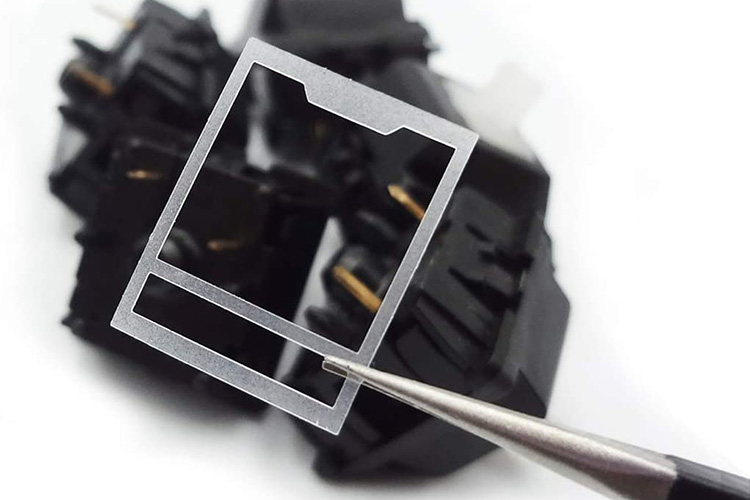
Adding switch films between the top and bottom housing adds stability to the switch and provides a better seal when applied properly. Switch films were seen as a necessity because some switch housings, such as Cherry MX switch housings, were prone to wobble. This wobble would cause an irregular typing feel that can, in bad cases, will feel like a loose-fitted keycap.
You may slightly loosen the housing during the opening of a switch, so filming may help tighten the seal between the housings. Remember that this step is not entirely required, although many keyboard enthusiats swear by it.
Reassembly
After all previous steps have been done, you may now reassemble the switch. Do note that the top housing and stems have their proper orientations. Reassembling a switch in the wrong way may cause damage that will compromise the whole switch mechanism (i.e., damaged leaf).
Doing all of this one step at a time and one switch at a time may seem like a daunting task. The mere thought of doing this on even just 60 switches might seem very time-consuming- it is.
So load up your favorite playlist, podcast, or stream and get to lubing. Using a lubing station (pictured below) may help improve workflow, allowing you to lube multiple switches at a time.
The Cost of Lubing – Is It Worth It?
This section will discuss the upfront costs of lubing switches. The prices mentioned may be subject to change, and stocks of items are not always guaranteed.
Switch Puller
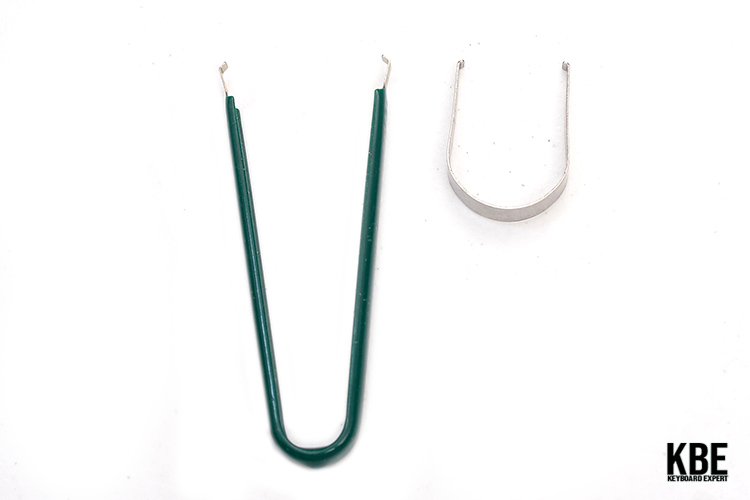
An essential tool, especially for hot-swap boards. Switch pullers trivialize removing switches from a board assembly. A decent switch puller for $3 or lower will serve you well for quite a while. If you already have a switch puller from your keyboard kit, consider buying a longer one if your stock switch puller is tedious to use.
Switch Opener
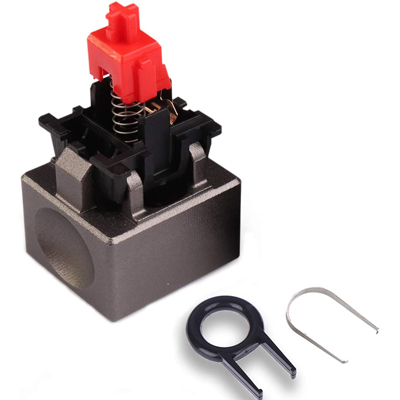
A decent switch opener will trivialize the process of opening switches instead of using a screwdriver. It is worth noting that Cherry MX style housings and Kailh style housings have different shapes, thus requiring differently shaped switch openers. A decent metal switch opener costs around $8 US for single-type openers to $11 for Cherry+Kailh openers.
3D printed switch openers are much cheaper (under $4 US for dual-type openers) but do not work as well as metal openers. Operation these switch openers requires pressing with fingers, and you may experience pain from prolonged use.
Gateron came up with their own switch opener similar to pliers to avoid the finger pain problem. The only downside to this is that it is much more expensive at almost $30 for the switch opener.
Lubricant

The popular switch lubes Krytox and Tribosys are often sold in small 3 mL, 5mL, or 8mL containers. While this may seem like such a small amount for many switches, a 3 mL container of lube is enough for approximately 200-300 switches. Krytox/Tribosys lubes are priced at around the $8-$10 range for 3mL. (Prices from Divinikey)
Lubing Station
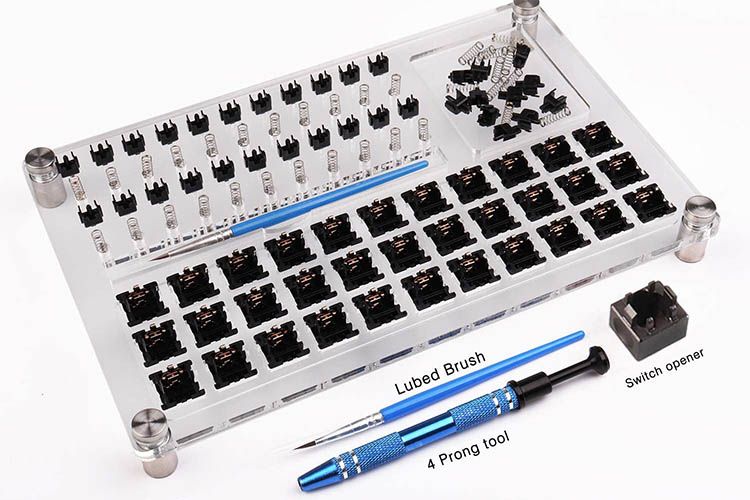
Lubing stations are very helpful in managing workflow because of the multiple slots you can work on switches with. Lubing stations are often sold as bundles with brushes, tweezers, and stem holders. This is very convenient as it saves you the trouble of looking for specific size tweezers and brushes. You can buy a 30+ slot Acrylic lube station bundle for around $15.
Verdict
The tools you’ll use for lubing will set you back around $40+ US but consider this a small investment. These tools will do you good for more than one build if you plan to build more than one board. The much more significant investment, in my experience, is time. For a 65% board, it used to take me 3-4 hours to complete 70 switches. After putting in the time to make my workflow more efficient, I was able to cut it to under 2 hours for 70 switches, including board build. After quite a few builds, I still have my tools and materials from my first lube job with enough left for around 150 switches.
Do Some Mechanical Keyboard Switches Come Pre-Lubed?
If you don’t have the luxury of time to go through the whole lubing process, you have most likely asked yourself, “Can I buy switches that are already lubed (and filmed)?” or “Can I pay someone else to lube my switches for me?” If that’s the case, lucky you, the answer is yes!
If you already have your own container of stock switches, you can avail the services of a local modder. If you are yet to buy switches, more and more vendors are adding options for pre-lubed switches. Some switches are lubed by the factory that manufactures them, also known as factory-lubed switches. Some GATERON switches such as Akko x GATERON and GATERON Pro line of switches are factory-lubed.
Vendors like Glorious and KBDFans have options for pre-lubed switches. These are advertised as hand lubed (as opposed to factory lubed switches) and have an additional premium for availing of this additional service.
Glorious has this option on their Lynx and Panda switches for an additional $10 per pack of 36 switches. KBDFans has a lubing service for their fully assembled boards at around $0.6 per switch ($42 for 70 switches, $54 for 90 switches).
Is Mechanical Keyboard Lube Used in Other Keyboard Parts?
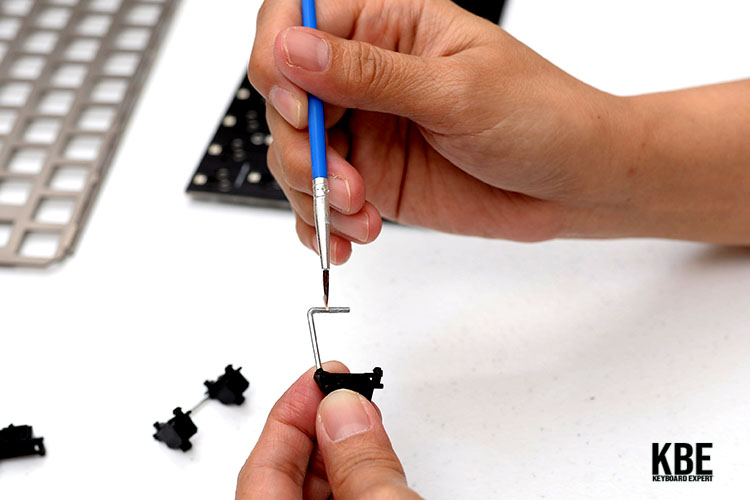
For a modification that requires so much time invested, you’re probably thinking, “Where else can I use lube?” Besides “lubed switches,” you’ve also probably heard of “lubed stabs.” Keyboard stabilizers are used in the larger keys such as the spacebar, shift keys, enter, backspace, and some Number Pad keys.
Lubing stabilizers will offer a large impact on the board’s overall sound and typing feel. Stabilizers have their own contact points and could benefit greatly from lubing. Doing such modification contributes to reduced rattle in stabilizers, giving the bigger keys a sound closer to your switch sound profile.
Is Mechanical Keyboard Switch Lubing Necessary?
With there seeming to be a consensus that switch lubing is a must, it begs the question, “Is lubing really that necessary?” It was mentioned earlier that mechanical keyboard switches would benefit immensely from lubing, and there are actually switches that do well enough even without lubing.
Many JWK switches, such as Alpacas, are known to be smooth enough to not need lube. Some tactile switches, specifically the Holy Pandas and their derivatives (and clones), already sound and feel good in their stock form. Lubing these switches will only improve the user experience.
A switch that deserves a special mention is Gazzew’s Boba U4T. It is recommended to be lubed in a special procedure (that the creator came up with) or not lubed at all. Either way, it produces one of the most sought-after sound profiles and feel – the legendary “thock”.
Stephen is the head content creator of Keyboardsexpert. His mechanical keyboard journey began in 2014 when he got his Razer Blackwidow. Since then, he has been fascinated with all things mechanical keyboard-related. He later discovered the custom keyboard hobby and fell in love with the vast customization options. He is currently searching for his endgame and is very excited to share his journey and educate other keyboard enthusiasts.
